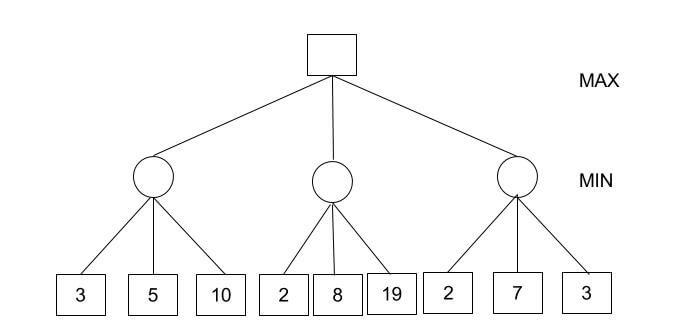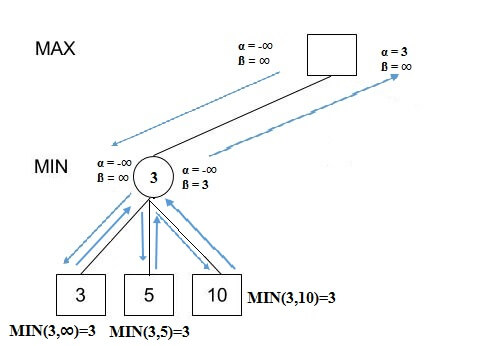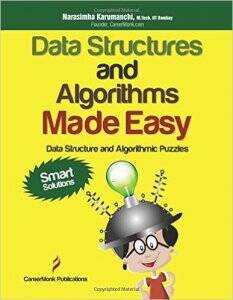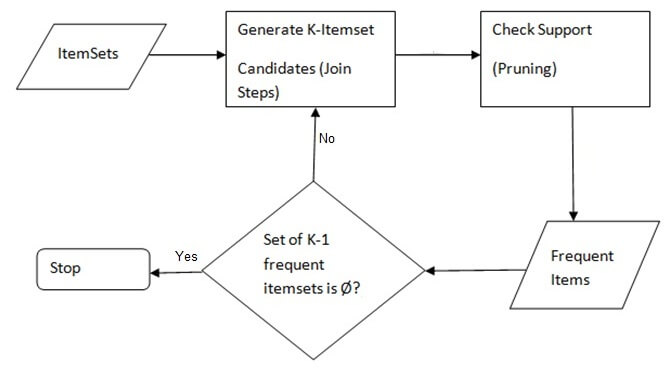Trying to find an example of the “walking a thin line” idiom is easy. Think of HR managers who have to align company goals and employee satisfaction!
HR leaders no longer just stick to legal and compliance issues; they are now strategic business partners with a key role to play in shaping the company’s culture and taking the company closer to realizing its vision.
The talent management and performance review processes are certainly not what we’d refer to as all in a day’s work. To add to their cup of woes, they have “mundane” tasks—finding top quality hires, retaining them, ensuring there are no pains areas in employee engagement, staving off all kinds of legal hassles—which require them to be the go-to person while being innovative, proactive, and brimming with energy.
Apparently, this is possible.
Thanks to the digital era, the market is now flooded with tools, apps, and processes to help HR pros kick back and relax. For instance, HR innovation was the theme of the successful “Hack the Experience” hackathon sponsored by Brilliant Ink. The event held in San Francisco in 2014 drew over100 professionals collaborated to come up with solutions to improve employee engagement.
Hackathons—an underrated tool
Hackathons can give you the vision. You can create employee experiences that are compelling and fun. These high-energy events are much more than people working collaboratively on a brilliant idea using software and hardware to solve a problem. Let’s see how.
80% of Fortune 100 companies use hackathons to drive innovation. You too can! Learn how
Expect the unexpected
Who hasn’t been guilty of failing to recognize talent right under the nose? It happens.
You can fix this. Conduct an internal hackathon to assess your company’s existing employee pool. You will be amazed at the “hacks” your employees can come up with.
Tech companies benefit greatly from holding hackathons for its developers where they have to think outside the box and prove their mettle under time and problem constraints.
“It can also provide good clues on design sensibilities, presentation skills and team collaboration ability of the engineer,” says Ravi Gururaj, chairman of the Nasscom Product Council.
And how right he is.
HR managers should advise team leads to gauge the competency of their team members before putting in requests for urgent hires.
“If you’re inside a company and convinced you have the best thing and if only you could get visibility in front of your CTO—then an internal hackathon is a great way of enticing the internal developers to skip to the top of the list, get an exclusive peak of data or even incubation,” says Delyn Simmons from Mashery.
People can get all fired-up when they realize they aren’t going to be putting the company at risk by implementing avant-garde ideas in their everyday projects. At an internal hackathon, employees are encouraged to come up with actionable solutions. Give them a carte blanche.
Like Sabeen Ali, founder of AngelHack, says, “They (employees) get to lower their typical boundaries, typical restriction, and build something that they think isn’t part of their immediate role or immediate responsibility. There’s a freedom to it.”
It is a chance for you to tap into potential talent without having to spend time and money looking for skills outside the organization. Say goodbye to a pile of résumés, and say hello to some vacation days.
Get your company to adopt it as a business practice.
Wipro held an internal hackathon for its employees in June 2014.
Wipro CEO T K Kurien said, “We intend to do one hackathon every month. You realize people’s competency once you go through a hackathon. You find that competency sometimes doesn’t reside at the top of the pyramid; it lies right at the bottom.”
Be ready for unprecedented employee engagement
You want engaged employees, people who are passionate about their work and enjoy a sense of belonging in the company. Engaged employees believe in innovation and helping the organization go forward. The not-so-engaged employees will go through motions, but they won’t do much more. The actively disengaged employees undermine team accomplishments, showing their unhappiness every chance they get. Gallup says that businesses in the U.S. lose $350 billion every year because of disengaged employees!
HR managers can unleash the phenomenal power of engaged workers by ensuring employee commitment, making them go the extra mile for the company only because they want to. They can use hackathons as tools to bring about meaningful change. Through hackathons, HR leaders drive engagement by focusing on self-directed and dynamic learning, a diverse and flexible work environment, encouraging empowered teams and transparency and honesty by the management, facilitating talent mobility, and ensuring a culture of recognition.
Using tools such as hackathons, HR can help build camaraderie and cohesiveness. Along with getting rid of organizational silos and fostering innovation, such hackathons set the scene for employee recognition and other employee-focused initiatives such as enhancing employee engagement for better productivity and overall profitability.
Pi Wen Looi, the president of Novacrea, a California-based business management consulting firm, and the head judge of “Hack the Experience,”said, “Employee engagement is a complex problem. There’s more than one thing that feeds into whether or not a person is engaged. A hackathon like this gets a lot of people thinking about the problem in different ways. You’re kind of attacking it from different angles.”
Companies such as LinkedIn and Facebook are also using hackathons to tackle low levels of employee engagement. In the LinkedIn HR hackathons, “interns with diverse backgrounds, experiences, and disciplines” from the Silicon Valley compete to come up with innovative solutions to help HR execute its priorities successfully.
So, what’s stopping you from doing one for your company? Disrupt HR!
You could take a leaf out of CISCO’s notebook and reconfigure the HR function.
Build innovative tangible products
In the hackathon lingo, the word innovation is perhaps the most hackneyed. But there really isn’t another term that quite crystallizes what these events embody. Here are a few examples of what the coming together of enthusiastic minds can achieve. Products may not be fully fleshed out but the promise they hold is immense.
At HackerEarth internal hackathons have become de rigeur to break everyday monotony and unlock excellence. Held every quarter, the company had 10 so far. Five ideas shortlisted from every hackathon go into production. Over 50 products have been rolled out, either to customers or internal teams. Code Monk, Wordsworth, Flash, and Optimus. No, they aren’t names of Transformers! These are some of the wildly successful products HackerEarth’s teams created at internal hackathons. Code Monk is an app for learning programming on the go; it’s been downloaded 88,000 times in six months. Wordsworth is an internal grammar and guideline checking tool. Flash is a caching system that decreases the page load time, thereby enhancing customer experience and improving page ranking. BlackOps is an in-house mail engine which saves more than $3500 per annum, and Optimus is a bot which monitors, reports, and resolves issues in the infrastructure saving us countless man hours. What you need to know is that none of these tools were a part of the plan or roadmap. They wouldn’t have come about without internal hackathons.
Madhusudhan Anand, Engineering Manager at HackerEarth, said, “The coming together of teams boosts morale when everyone ideates together to solve a problem and having fun while doing so greatly improves engagement. Then the camaraderie that comes from people working across different parts of the organization has always been a great way to strengthen communication and foster a sense of collaboration, community, and innovation that comes with being a part of the HackerEarth Family.”
Watch your company culture get upvoted
As an HR manager, if you can’t come up with ideas to boost the sagging spirits, why not ask the employees to identify ways to address the pain points? At Big Spaceship, the overnight hackathon Hack the Spaceship was about finding creative ways to improve company culture.
You can teach the employees what the company is about.
One of the best examples of reinforcing company values through internal hackathons is by doing what Atlassian, a Sydney-based enterprise software company, does. The employees wait for the ShipIt days. The challenge embodies the company’s values: be the change you seek, play as a team, and build with heart and balance. People don’t take them too seriously or get too competitive. They have 24 hours of fun, enjoying fantastic interdepartmental collaboration, and reaping rewards of many kinds.
You only need look at what Facebook’s hackathons did for its culture.
In Pedram Keyani’s words: Hackathons organically encourage culture-building and collaboration within the company without any top-down guidance. Employees, both new and old, work together quickly and efficiently, improvising and brainstorming, failing and winning, and achieving new levels of interpersonal harmony.
At hackathons, employees are likely to make a couple of lasting friendships, and they come to depend on each other in positive ways. The chances these employees will recommend the company to people outside are quite high.
Talent retention becomes easier; disgruntled employees become fewer.
Hiring becomes the easiest part of the job
If you are talking external hackathons, then HR managers responsible for recruitment already know what this is about.
Finding game changers within the organization could happen with internal hackathons. But if it doesn’t, then you need to look elsewhere. As an HR manager, you can get the management to host or attend hackathons to capture the right talent.
Community building and entrepreneurship are not the only focus areas of hackathons now. They are routinely used to recruit people with the right skills and attitudes.
HR can network with the organizers to get access to interesting profiles. When you attend events, building rapport can’t hurt. Understand what the hackathons are about, and find out why the participants are attending them.
Scout for tech talent at relevant hackathons, and you’ll meet your target before you know it.
Don’t wait for the flip side. There isn’t one.
People love to hate HR, but you don’t need to give them reasons.
HR doesn’t have to be the bearer of bad tidings always. And there are enough hours in a workday to get everything done.
You can do more than “slapping bandages on problems.”
Getting people strategies and business needs to be looking at the same end goals requires more than a little nudge in the right direction.
Whether you are tasked with protecting company culture, getting the brightest minds, retaining talent, or upping employee engagement rates this quarter, there’s help.
You just need to look in the right places.
Looking to conduct online coding tests to hire developers for your organization? Try HackerEarth Recruit free for 14 days to start creating tests for your candidates right away.



















































 Our AI-enabled Smart Browser takes frequent snapshots via the webcam, throughout the assessment.
Consequently, it is impossible to copy-paste code or impersonate a candidate.The browser prevents the following
candidate actions and facilitates thorough monitoring of the assessment:
Our AI-enabled Smart Browser takes frequent snapshots via the webcam, throughout the assessment.
Consequently, it is impossible to copy-paste code or impersonate a candidate.The browser prevents the following
candidate actions and facilitates thorough monitoring of the assessment:











